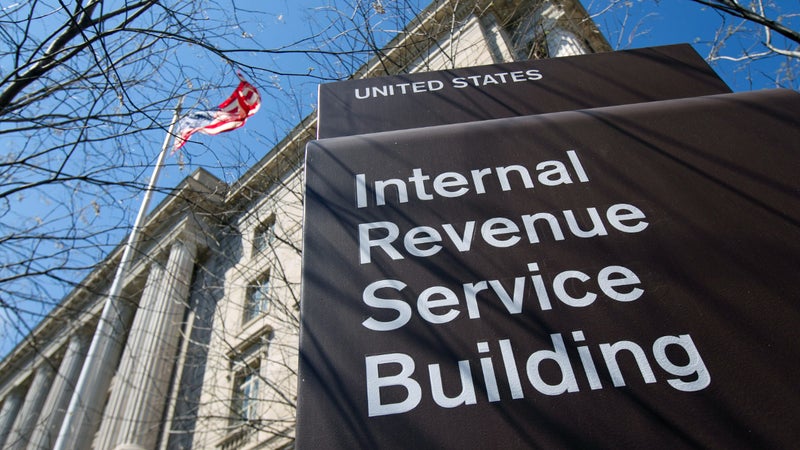How to invest in mutual funds

The Bankrate promise
At Bankrate we strive to help you make smarter financial decisions. While we adhere to strict , this post may contain references to products from our partners. Here's an explanation for .
Depending on your financial objectives, mutual funds can be an essential tool for achieving long-term wealth. While they tend to have higher fees and greater investment minimums than exchange-traded funds, their legacy status appeals to many investors.
What is a mutual fund and why should you consider investing in them?
Mutual funds are investment vehicles that allow you to own a portfolio of stocks, bonds or other securities. When you buy a share of a mutual fund, you own a tiny fraction of all the assets in that fund.
For retail investors, the most common reason to buy mutual funds is diversification. Owning various investments minimizes the risk of having too much exposure to a single asset.
Mutual funds are also a cost-effective means to streamline the process of investing. Through these managed funds, you let a professional do the work for you.
Actively managed vs. passively managed funds
Mutual funds can be classified as either passively or actively managed.
In a passively managed strategy, a fund manager aims to replicate the performance of a broad benchmark like the S&P 500. Through one of these investments, you essentially own all the equities that make up the index. This process eliminates the need for fund managers to select individual companies at their discretion. Therefore, management fees are usually low.
With actively managed funds, money managers buy and sell assets when they find an opportunity — as long as those investments align with the funds’ strategy. The goal here is to produce higher returns than one would achieve by simply following an index. As a result, these funds typically come with higher fees and can exhibit greater volatility than passively managed funds.
When building your portfolio, the key is to keep fees low and remain diversified. The more you can minimize unnecessary expenses, the more you can invest toward your financial future.
How can you invest in mutual funds?
Here are five steps to follow to get invested in mutual funds and to continue investing in them:
1. Determine your financial goals
The type of investments you choose depends on what you are trying to achieve. For example, someone about to retire will likely have a different asset allocation than someone who’s just out of college. So, always let your financial objectives drive your decision-making.
Younger investors who are saving for a long-term goal such as retirement will likely focus their investments on riskier assets like stocks, while an investor who’s near retirement age might shift their portfolio toward safer choices such as bonds or money-market funds.
2. Research mutual funds
When you’re ready to invest in mutual funds, you’ll want to spend some time researching different fund options. Make sure to review if there are minimum initial investment requirements, the types of operational fees you’ll pay and any clauses related to pulling money out.
For example, certain mutual funds have early redemption fees or even load fees. A load fee is a commission an investor pays when buying or selling mutual funds. Mutual fund companies and their intermediaries determine these fees, but not every fund charges them.
In the long run, fees are an essential consideration for investors, as they reduce your returns. Pay attention to the fund’s management fee to see how much you’ll be paying each year to the fund manager.
All the information you need about a specific fund is available in the fund’s prospectus. Take the time to review it in detail, and make sure you are comfortable with all the conditions.
As with most investments, mutual funds are susceptible to losses. The magnitude of potential losses is tied to the level of risk contained in the portfolio. So, a fund that invests heavily in riskier assets like emerging technologies will have a very different risk profile from a fund that invests in established, tried-and-true names.
3. Outline your asset mix
Before investing, it can be helpful to assess your current portfolio to get a picture of how your money is allocated. Most portfolios are typically made up of a combination of stocks and bonds. When you’re young or investing towards a long-term goal, your portfolio can afford to take on more risk, so you might have 90 or even 100 percent of your money invested in stocks. But as you get closer to your goal, your portfolio typically shifts toward safer investments such as bonds, though bonds aren’t riskless.
How your money is allocated also depends on your risk tolerance, or how well you deal with losses or volatility. Those with low risk tolerance tend to hold a greater portion of their portfolio in bonds and fixed-income investments, while those with high risk tolerance may be more comfortable holding a large portion of stocks.
Think about whether your goals are long term or short term, and whether or not you have a high tolerance for risk. Answering these questions can help you decide which types of mutual funds to consider for your portfolio.
Depending on your goals and time horizon, you might shift your portfolio to areas where you have fewer existing assets or even sell some positions that have grown to make up a too-large percentage of your portfolio.
4. Buy mutual fund shares
When you’re ready to purchase shares in a mutual fund, you generally have two choices: buy the shares directly from the fund company itself or purchase them through your online broker.
If you don’t already have a brokerage account, setting one up is relatively simple. Focus on the costs associated with a broker, the number of mutual funds available and the research tools before you decide which broker to go with. Charles Schwab and Fidelity scored well in Bankrate’s 2022 Awards.
You can also hold mutual fund shares in your 401(k) or another workplace retirement plan. These investments are typically automatic and made each time you’re paid by your employer.
5. Keep track of your investments
By periodically reviewing your investments, you can take charge of your finances and make any adjustments needed. Utilize any free resources from your broker, like meeting with a financial planner, and always ask questions.
Ultimately, there’s no such thing as a hands-off investment, but few investments need to be monitored daily. If you’re investing for a goal that is still decades away, such as retirement, then checking in on your investments monthly or quarterly should be enough to make sure you’re on track.
Types of mutual funds
There’s an abundance of mutual fund categories available to retail investors. These are built to help you achieve different financial objectives, such as retirement.
Below are some of the main categories fund investors can choose from:
Stock funds
These funds invest in domestic or foreign equities. Some follow a broad benchmark in a passively managed strategy, while others are actively managed, relying on a fund manager’s ability to pick stocks. In general, they are categorized based on an investment style such as growth or value. Company size also plays a factor, with large-cap companies having more established profiles than mid- or small-cap names.
Bond funds
One of the most popular types of mutual funds, bond funds invest in many different individual bonds, and income payments are generally made monthly. Bond funds can also be categorized by the type of bonds they invest in, for instance government or corporate debt. Considered a safer investment than equity funds, bond funds offer better yields than standard savings accounts.
Index funds
These funds aim to replicate the performance of a broad benchmark like the S&P 500 or the Nasdaq 100. Index funds provide instant diversification and often carry lower fees than actively managed funds. Additionally, these investments don’t rely on a fund manager’s ability to pick winning stocks. The mantra of index investors is “If you can’t beat em, join em.”
Money market funds
Considered low-risk, these funds usually invest in U.S. Treasury bills, certificates of deposit (CDs) and other cash equivalents. They offer better returns than your typical savings account, but your investment is not insured by the Federal Deposit Insurance Corporation (FDIC).
Balanced funds
Through this investment, you get access to a mix of stocks, bonds and money market funds. Also known as asset allocation funds, they provide tailored strategies aimed at delivering a combination of growth and income.
Target-date funds
These managed funds change their asset allocations based on your expected retirement age, selecting more conservative assets as you get older. The key with target-date funds, and any other fund for that matter, is to review the contents of the fund and ensure the strategy aligns with your financial objectives.
Bottom line
Mutual funds can help you reach your investment goals. There are many reasons to own them, including diversification and convenient access to various investment strategies.
Note: Bankrate’s Brian Baker contributed to an update of this story.




